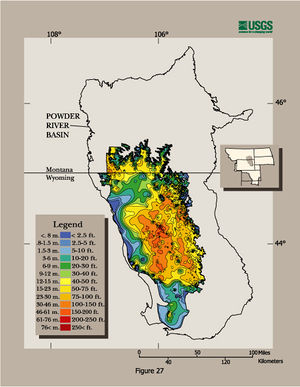Talk:Coal
Parked page content for possible re-inclusion.... --Ashcraft - (reply) 17:31, 13 April 2017 (EDT)
History of Use
Coal has been in use my humans for longer than any other fossil fuel. Prior to the Industrial age, coal was primarily used for heating because it burned longer and cleaner than other alternatives at the time. Upon the rise of technology coal became much more important. It started out as fuel for steam engine trains. However, as time passed it became the primary source of fuel for many factories. By 1875, coke [1] (the product of distilling coal)[2] had become the primary source of fuel for blast furnaces at steel plants. Upon the discovery of electricity, coal continued to be a popular source of heat. The primary reason we still use coal in the United States today is simply because we have so much of it. It continues to be a very important part of the world energy.[1]
Mining
The best way to extract coal from the ground is to mine it. Much of the coal we know of is very deep in the earth's crust. This makes mining coal very expensive. [3]
The process begins with what is called surface mining. This process removes the material on top of the coal so that shafts can be made. Once shafts are formed, the coal is gathered through one of three methods: drift, shaft, or slope mining. The coal is then loaded up into carts on conveyor belts and sent up to the surface for distribution. The coal can be transported in any climate. It can even be transported through pipelines. The coal is mixed with water or oil. This mixture is known as slurry.[3]
Formation
- Main Article: Coal formation
Coal formation is a very controversial issue in the creation vs. evolution argument, and one that has been under debate for many years. Secular (or uniformitarian) geologists traditionally teach that coal is formed at the bottom of swamps over millions of years of uniform peat deposition. This theory, known as the autochthonous theory states that coal is formed by slow peat accumulation, and suggests that the vegetation grew in place in the swamps or bogs. In contrast, most creation geologists hold to the allochthonous theory, and argue that coal can form quickly when put into the proper environment. This theory states that the required vegetation was placed rapidly by flood conditions. [4]
Quotes
| “ | "Scientists estimate that it takes 3–10 ft of compacted plant material to form 1 ft of bituminous coal (Energy, Minerals and Natural Resources Department, 2000)." | ” |
| “ | The mineral coal deposits, that appear in horizontal layers of a wonderful regularity, not very often mixed with accidental inclusions of another matter, vary much in thickness, from two centimeters or less to 20 meters or more.[2] | ” |
References
- ↑ 1.0 1.1 DOE Brief History of Coal in America
- ↑ Dictionary Definition-Coke
- ↑ 3.0 3.1 DOE Coal Mining
- ↑ ICR The Origin of Coal by Stuart E. Nevins, M.S., Acts & Facts Nov 1, 1976.
Additional Information
Creationists
- Upright Trees in Coal
- Coal: How Did It Originate? by Harold Coffin
- Snelling, A.A., and J.B. Mackay, Evidence of catastrophic deposition of coals and sediments of the Newcastle coal measures, Proceedings of the 19th Symposium on Advances in the Study of the Sydney Basin, Department of Geology, University of Newcastle, New South Wales, pp. 110-113, 1985.
- Snelling, A.A., and J.B. Mackay, The role of volcanism in the rapid formation of coal seams: The Walloon Coal Measures of Queensland and New South Wales - A case study, Proceedings of the 1985 International Conference on Coal Science, Pergamon Press, Sydney, p. 641, 1985.
- Coal, volcanism and Noah's Flood by Dr Andrew Snelling and John Mackay
- Mackay, J.B., and A.A. Snelling, The 1980 Mount St Helens eruption: The role of volcanism in the formation of coal beds ( A modern analogue of ancient coal measure formation), Proceedings of the 18th Symposium on Advances in the Study of the Sydney Basin, Department of Geology, University of Newcastle, New South Wales, pp. 95-97, 1984.
Secular
- Coal poised for a comeback Environ Health Perspect. 2004 November; 112(15): A888–A891.

